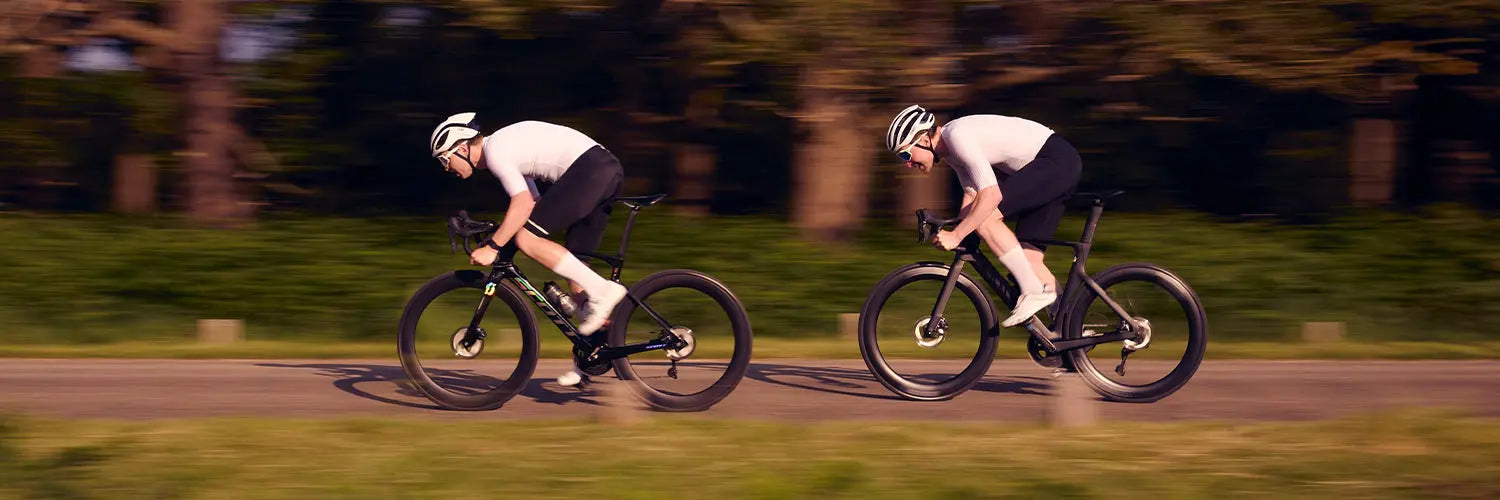The news this week that Saint Piran and Trinity will cease to exist as race teams at the end of the year highlights the precarious situation UK racing finds itself in right now. The cycling boom in the UK that began in 2012 has helped produce an unparalleled number of young British riders in the pro peloton. However, the outlook for the domestic calendar and amateur racing in the UK looks bleak.
Whatever the cause—top-down mismanagement, economic hardship, or resistance from local authorities making event organisation a thankless and uphill struggle—races are disappearing.
At Rule 28, we’ve built our niche by offering asymmetric products, creating solutions because we could, not because we thought the general cycling population would demand them. Doing things differently is our speciality, and doing things differently is what the UK cycling scene is going to need.
Here are a few ideas on how domestic racing could evolve and why this might even be a good thing:
1. Races Should Be More Than Just a Race
The people who organise races are the unsung heroes of cycling. The time and effort it takes to run an event far exceed what most realise, and race entry fees are hardly adequate compensation. To incentivise organising races, we’d like to see events transform into more community-centred experiences.
Imagine races that double as mini expos or days out. Mobile coffee vans, pizza stalls, live music, and drinks could draw in spectators and keep participants lingering post-race. Creating more vibrant atmospheres around races would encourage engagement and attract brands. At Rule 28, we plan to actively pursue this model next year.
2. Race Against the Clock
Bike racing in the UK has faced hardships before—much worse than now, in fact. As far back as 1890, road racing was banned. By 1895, clandestine time trials had emerged to meet the demand for competitive cycling.
This historical quirk still thrives today, with time trialling in the UK more popular than in any other country. If the team-based structure of domestic racing continues to falter and logistical challenges make road races harder to organise, we’d love to see an explosion of time trial events.
But these need to evolve. Racing on dual carriageways isn’t for everyone. We’d like to see more welcoming alternatives on quieter, safer routes—or even off-road time trials. A shake-up in formats could attract new participants.
3. Get Teams Out of Racing
Here’s a controversial take: unless you’re racing a National A event, do you really need a team? Speaking from personal experience, I raced solo one year, wearing kit I loved, and then joined a team the next year, then had to wear kit I didn’t like. I was categorically better off as an individual.
At lower levels, “team tactics” are almost non-existent. Racing should be fun, and forcing teams into 2/3/4-category races simply doesn’t add much value. Ride the kit you like, train with friends, and enjoy the experience. Don’t feel like you need to be part of a team to race well—you don’t.
4. Embrace Different Types of Events
We love gravel—and everything about it. Gravel racing is free of the pretensions that burden road racing. Riders compete against themselves, and finishing the course is the achievement. No one is happy just “getting round” a crit or road race, but gravel is different.
It’s more like a marathon, where participation is celebrated. We’d love to see more gravel and off-road events popping up across the UK. They provide a fresh perspective on what competitive cycling can be.
While the struggles of the UK racing scene are tough to watch—and we feel the pain as a clothing brand focused on racing—we’re hopeful. From this adversity, fresh, fun, and fast new styles of racing could emerge in the next few years.
Sam,
Rule 28






Share:
Team Sponsorship: How to Approach Brands
How to Perform Aero Testing at Home: A Step-by-Step Guide for Cyclists